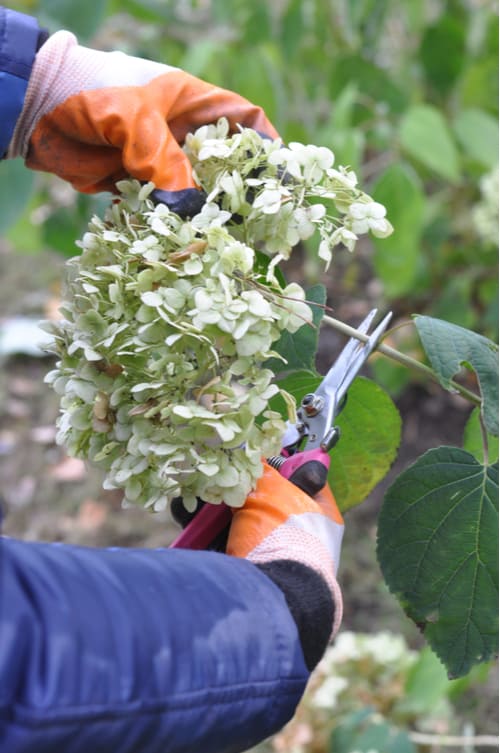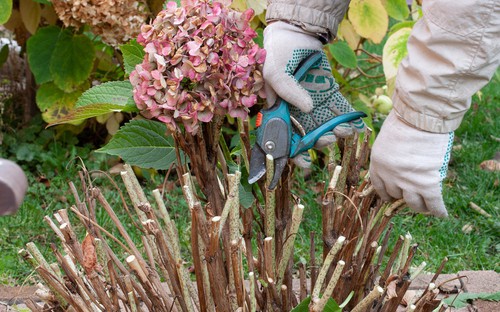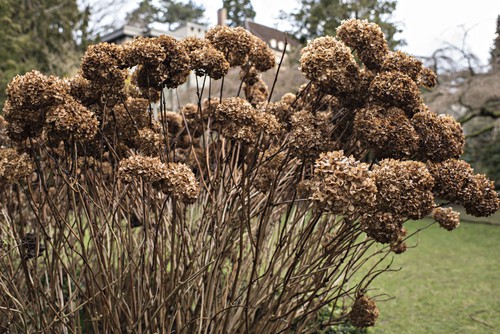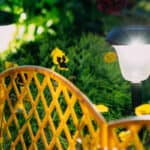Last updated on September 16th, 2021
Our site is reader supported, this means we may earn a small commission from Amazon and other affiliates when you buy through links on our site.
Deadheading is a common gardening practise that promotes healthy growth in any plant. You should deadhead hydrangeas, as long as you don’t confuse deadheading with pruning. However, it’s important that you deadhead hydrangeas correctly and at the right time of year as you could do more harm than good.
What is the difference between deadheading vs pruning hydrangeas?

When deadheading any plant, you just remove the fading flower blossoms so that the plant’s energy can be used for growing new blossoms, strengthening the roots and maintaining the other blossoms. It encourages your plant to grow fuller and thicker and generally keeps it looking its best during the growing season.
Pruning a plant is more aggressive as this involves cutting off stems and branches to keep the plant neat and to encourage it to grow steadily, you can also prune out diseased and dead stems. However, if you prune hydrangeas at the wrong time of year, you could be removing next years flower buds which you obviously don’t want to do.

For instructions on how to do this, see How to Prune Hydrangeas – the Beginner’s Guide and When do you Prune Hydrangeas?
If you have Endless Summer Hydrangeas you can learn when and how to deadhead that variety in this article
How to Deadhead hydrangeas – a few simple steps
- Clean your secateurs or scissors with rubbing alcohol – you don’t want to spread diseases from their past use to your gorgeous hydrangea plant.
- Find a faded hydrangea blossom that needs removing.
- Look down the blossom’s stem to where it meets the larger branch; there should be buds of new growth there. Cut above this to preserve next year’s buds.
- Or, if there’s no new buds yet, look down the stem to the next set of large leaves and cut just above that.
- Continue until you’ve cut off all the faded flowers.
When to deadhead hydrangeas
Now, this part is important, only deadhead your Hydrangea in the spring to sometime in August – that’s the blooming season – you’re free to deadhead your hydrangeas as needed to encourage new growth and to keep the plant looking its best.
When not to deadhead hydrangeas
Stop deadheading your hydrangeas in mid to late autumn, usually around the end of August. If you really don’t like having the dead blooms on the plant, be extra careful in removing them so that you don’t also cut off the next year’s buds. You may choose to make the cut well above any new buds that you see.
Do not deadhead hydrangeas in winter

Do not deadhead a hydrangea plant in the winter. Leave the dead blooms on the plant as protection for the new buds in this cold spell as well as architectural plant interest in the snow.
Tips for deadheading hydrangeas flowers
When deadheading your plants, regularly wipe your secateurs or scissors to clean them of any diseased spores you pick up so that you don’t spread them to another part of the plant.
Remember to keep to your hydrangea fertilising schedule to enhance the benefits of deadheading.
If you’re having problems with your hydrangeas, we can help. Our articles Why are my Hydrangea leaves wilting and turning brown? and Hydrangea pests and diseases give practical and useful information for the hydrangea lover.


